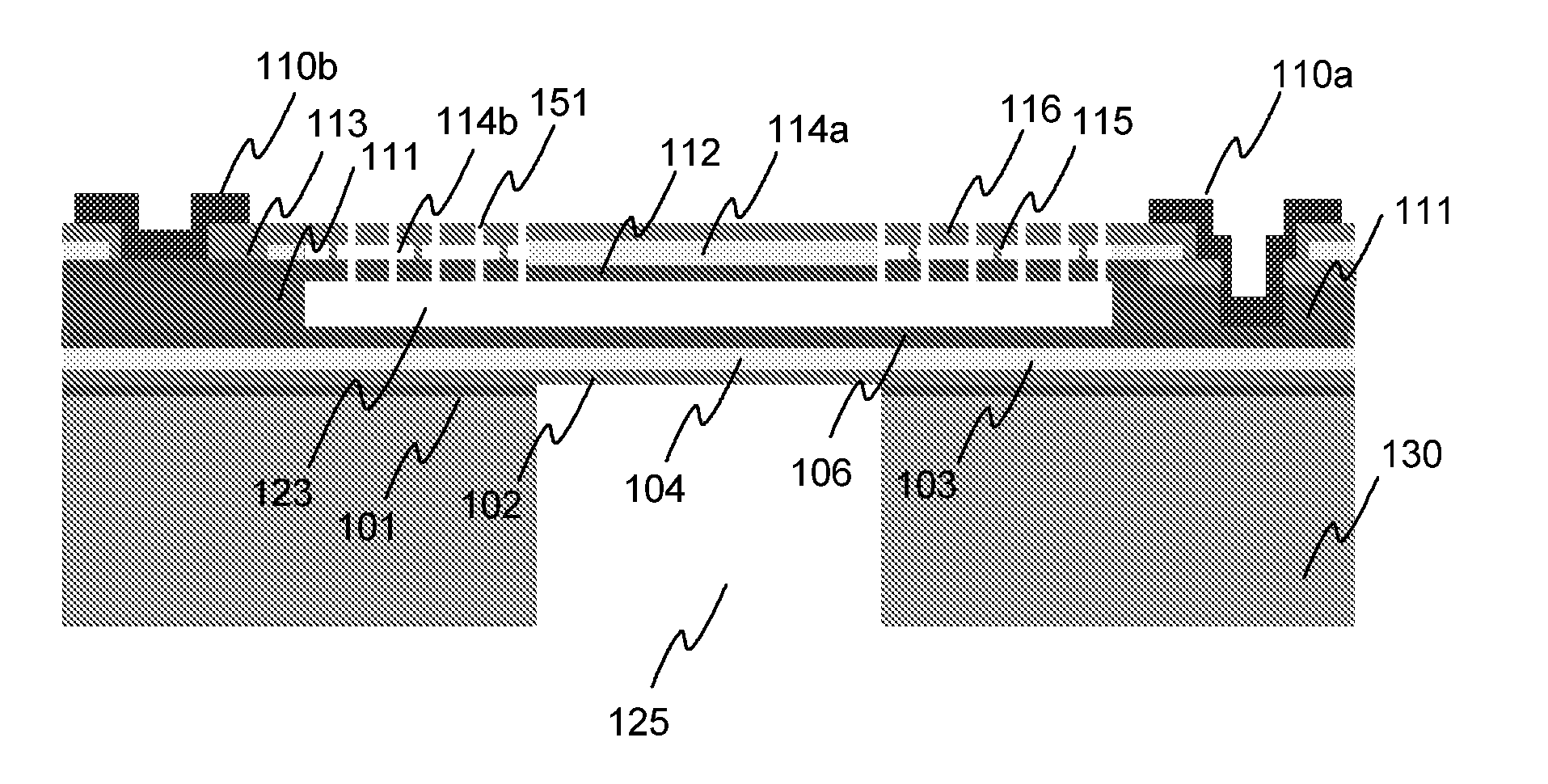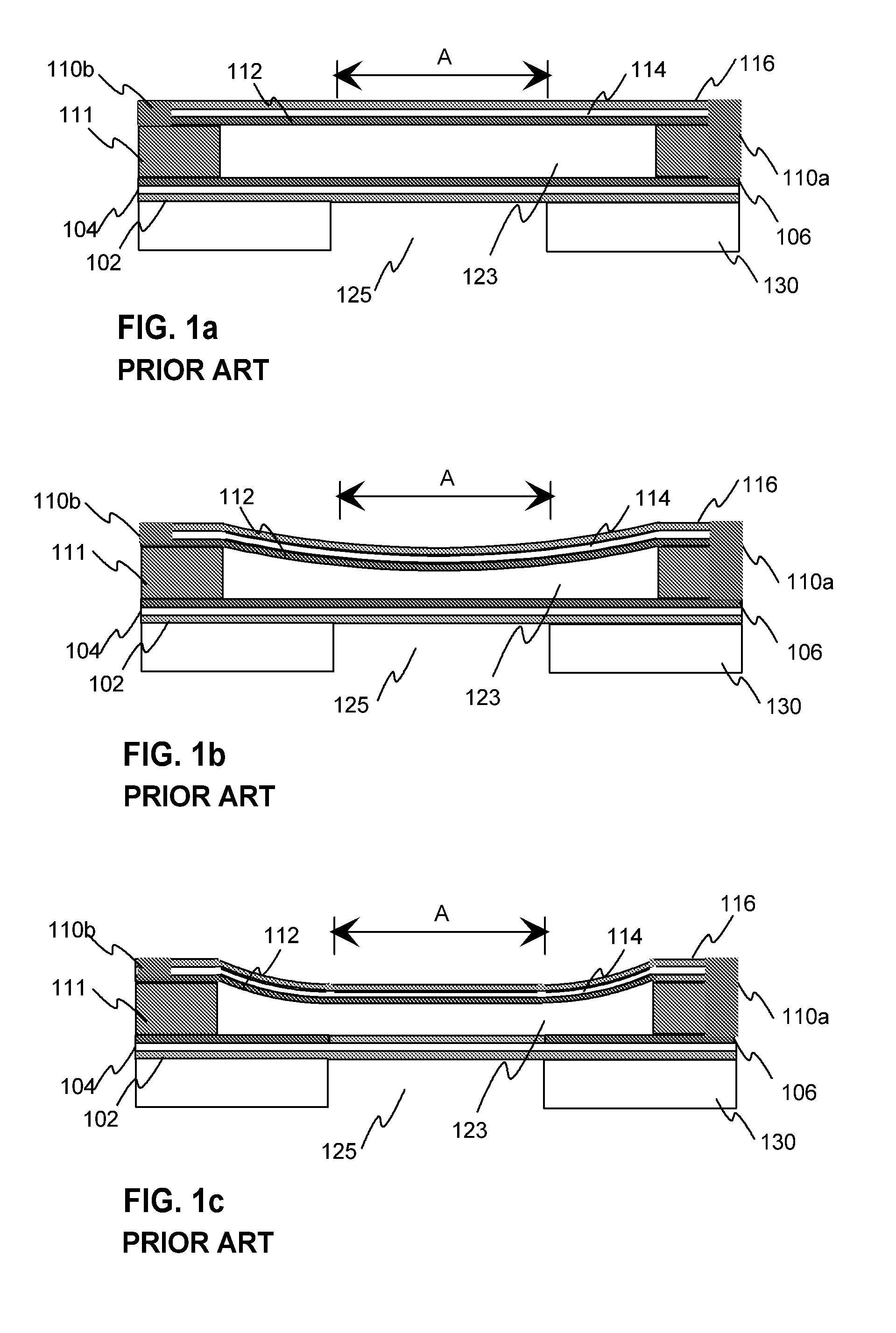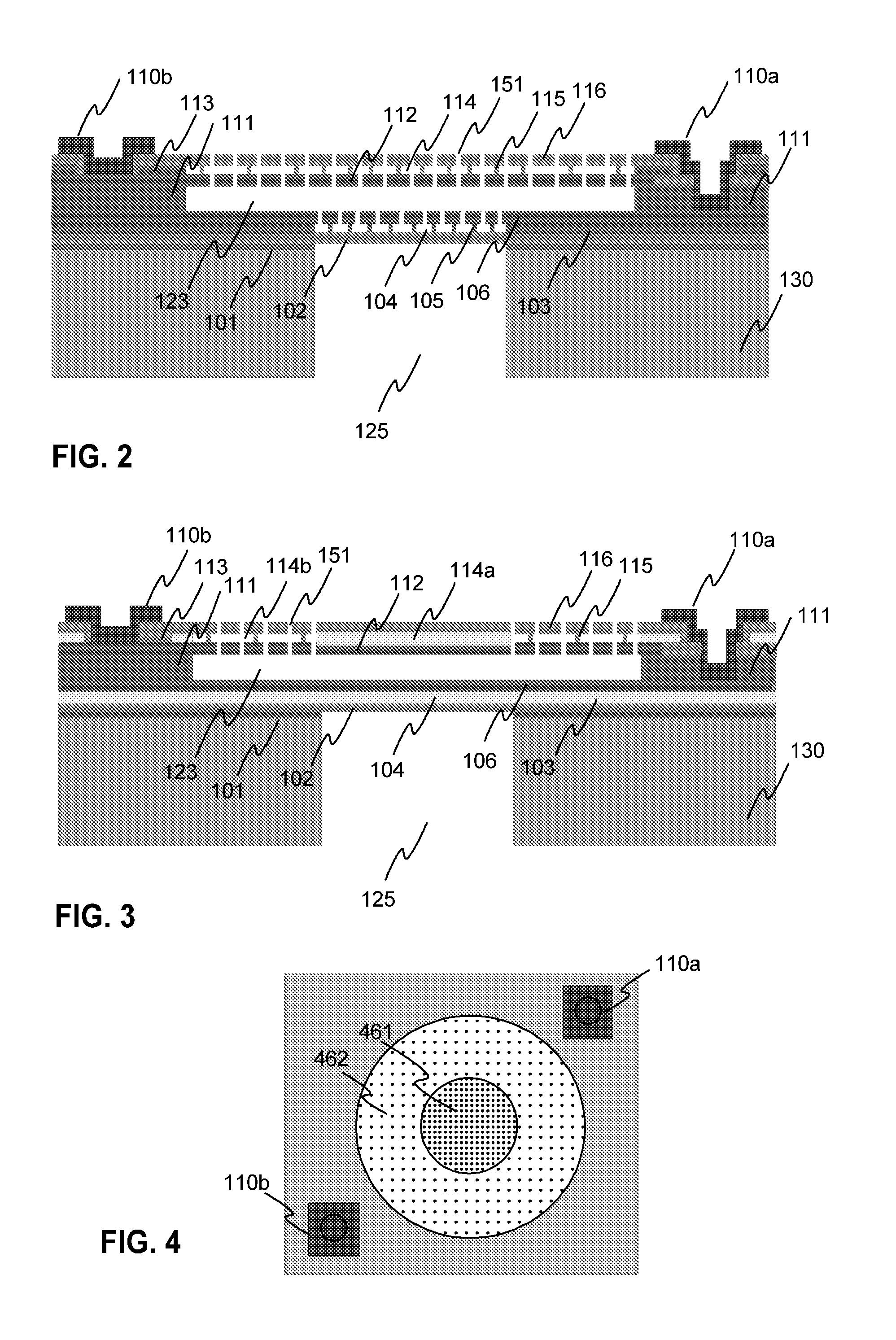Micromechanical tunable fabry-perot interferometer and a method for producing the same
a technology of fabryperot and interferometer, which is applied in the direction of optics, instruments, optical elements, etc., can solve the problems of insufficient finesse of such an interferometer for several applications with high finesse, ineffective voltage applied to the electrode at the optical area, and difficult to provide high voltage in small-sized sensor circuits. good performan
- Summary
- Abstract
- Description
- Claims
- Application Information
AI Technical Summary
Benefits of technology
Problems solved by technology
Method used
Image
Examples
Embodiment Construction
[0059]FIGS. 1a, 1b and 1c were described in the prior art section of the description.
[0060]FIG. 2 illustrates a cross section of an exemplary Fabry-Perot interferometer according to the invention. The interferometer has a substrate 130 of e.g. monocrystalline silicon material, wherein there may be a hole 125 at the optical area of the interferometer, thus providing an optical aperture for the interferometer. If the substrate is heavily doped the substrate layer attenuates the radiation and prevents the transmission of radiation outside the optical aperture. However, an aperture may also be provided with a separate non-transparent layer, without removing the substrate.
[0061]The reflecting layers of the fixed mirror are provided by layers 102, 104, 106, wherein layers 102 and 106 are of polycrystalline silicon, and layer 104 is a gap which includes vacuum, air or other gas which is transparent in the operating wavelength range. The gap has been formed by removing a sacrificial layer o...
PUM
| Property | Measurement | Unit |
|---|---|---|
| Density | aaaaa | aaaaa |
| Electric potential / voltage | aaaaa | aaaaa |
| Width | aaaaa | aaaaa |
Abstract
Description
Claims
Application Information
 Login to View More
Login to View More - R&D
- Intellectual Property
- Life Sciences
- Materials
- Tech Scout
- Unparalleled Data Quality
- Higher Quality Content
- 60% Fewer Hallucinations
Browse by: Latest US Patents, China's latest patents, Technical Efficacy Thesaurus, Application Domain, Technology Topic, Popular Technical Reports.
© 2025 PatSnap. All rights reserved.Legal|Privacy policy|Modern Slavery Act Transparency Statement|Sitemap|About US| Contact US: help@patsnap.com



